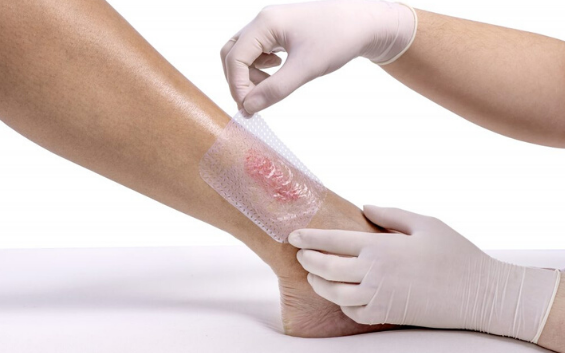Hyperbaric oxygen is an effective tool for the treatment of chronic wounds or difficult healing. It improves the quality of life of patients, controls infections and in some cases prevents them from reaching amputation.
When body tissue is damaged, either acute (a traumatic wound) or chronic (such as exposure to radiation treatment with radiation therapy), an inflammatory process is triggered to try to eliminate the aggression and begin the normal process of healing and repair.
If this inflammation continues over time, whether due to external factors such as infections or by patient characteristics such as diabetes and circulatory problems, this lesion becomes a chronic wound. Under these conditions, healing can take months and even years. The wound can be open (with exposed tissue) or present a mild chronic and painful reddening of the skin that is common in injuries caused by radiotherapy (radiation injuries).
How does poor wound healing affect the quality of life?
Chronic wounds can have many psychological consequences: the result of the wound itself, the associated pain or social stigmas. For example, the bad smell and high levels of exudate can be attributed to ulcers. Sometimes and in this scenario, the person may have symptoms of anxiety and depression, a negative image and social exclusion, which negatively impacts the quality of life of patients.
In turn, many patients decrease or suppress all types of activity because they think they may have complications in their wounds. Sleep can also be affected and interfere with the immune system. Even the cost involved in the healing of these wounds (bandages, dressings, and creams, medications) is an important factor since it has a high impact on the patient’s economy and health costs.
Over time, the chronic lesion can progress and progress. Many times it becomes infected and amputation should be considered, which aggravates the patient’s condition.
How are chronic wounds treated?
Treatment may vary according to the location and severity of the wound. If it has to do with any medical condition such as diabetes, it is necessary to address the underlying problem. Treatment usually involves one or more of the following options:
Analgesics and anti-inflammatories: reduce inflammation and reduce pain.
Antibiotics: prevent or treat infections. They must be prescribed by the doctor.
Debridement: dead tissue that can hinder healing is removed.
Dressings: protect wounds from infections or major injuries.
Negative pressure therapy: the wound fluid is suctioned.
Hyperbaric oxygen therapy: high concentrations of oxygen are supplied within a hyperbaric chamber that is pressurized.
Many times the lack of oxygen (hypoxia) is the factor that prevents wound healing. Against this background, hyperbaric chamber treatment appears as an alternative that provides the patient with high concentrations of oxygen. This facilitates the healing process that is stuck in chronic or non-healing wounds.
Why is oxygen important?
Oxygen is necessary for the synthesis of collagen, which in turn is essential for the regeneration of tissue, blood vessels, wound irrigation and healing. On the other hand, it increases the ability to control infections and enhances the action of many antibiotics that are used to treat chronic wound infections.
According to Dr. Mercedes Portas, director of the Surgery and Burns Commission of the International Hyperbaric Medicine and Research Association (Ihmera) and head of the Department of Plastic and Burned Surgery of the Hospital de Quemados Buenos Aires, the cases that were treated in that Medical institution demonstrated strong results on the efficacy of the treatment of hyperbaric oxygenation in burns, chronic wounds and radio dermitis or chronic radiolesions with years of evolution. Likewise, the treatment has a very good response in vascular or varicose ulcers, diabetic foot, chronic bone infections, traumatic wounds, pressure ulcers, and oncological ulcers.
In the Clinic of Wounds of the Hospital Ramos Mejía of Buenos Aires also the treatment of hyperbaric oxygenation is used to try to prevent amputations in the diabetic foot. The evidence shows that the healing process is accelerated almost 10 times within a year and in some cases, amputation can be limited to a lesser extent (example: to a finger and not from the ankle).
The use of hyperbaric oxygen is expanding and is an effective therapeutic tool for the treatment of chronic wounds since it significantly improves the quality of life of people suffering from complex healing wounds for different reasons.
Advised: Dr. Mercedes Portas – M.N 56659

